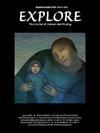Acupuncture combined with Guizhi Fuling Wan decoction for adenomyosis-associated dysmenorrhea: A case report
IF 2.2
4区 医学
Q3 INTEGRATIVE & COMPLEMENTARY MEDICINE
引用次数: 0
Abstract
Background
Adenomyosis (AM) is a common gynecological disorder frequently observed in women of reproductive age. It is characterized by the invasion of endometrial glands and stroma into the myometrium, often manifesting as secondary dysmenorrhea, menorrhagia, and infertility. Although hormonal therapy and nonsteroidal anti-inflammatory drugs (NSAIDs) remain the mainstream treatments, their long-term efficacy and side effects pose significant clinical challenges. Traditional Chinese Medicine (TCM), particularly herbal medicine and acupuncture, has emerged as a safer alternative therapy.
Case summary
A 39-year-old Asian woman presented to our hospital with a 10-year history of progressively worsening menstrual pain, accompanied by menstrual hypermenorrhea over the past 2 years. She was diagnosed with adenomyosis. According to traditional Chinese medicine theory, the diagnosis was dysmenorrhea associated with the Qi stagnation and blood stasis syndrome. Notably, despite treatment with nonsteroidal anti-inflammatory drugs, her dysmenorrhea remained unresponsive. The patient was treated with a modified herbal formula, Guizhi Fuling Wan (GZFLW), and acupuncture. After three menstrual cycles of treatment, her dysmenorrhea and other systemic symptoms significantly improved. At the time of writing this report, no recurrence had been observed during follow-up, and no adverse reactions occurred throughout the entire treatment period.
Conclusions
The success of this case indicates that traditional Chinese medicine can serve as an independent treatment option for secondary dysmenorrhea caused by adenomyosis, offering a viable alternative to nonsteroidal anti-inflammatory drugs (NSAIDs). It holds unique value and significant clinical importance for patients who are unresponsive to NSAIDs and refuse hormone-based therapies. However, further rigorous clinical trials are needed to validate these findings.
针刺配合桂枝茯苓丸汤治疗腺肌病相关性痛经1例
背景子宫肌病(AM)是一种常见于育龄妇女的妇科疾病。其特征是子宫内膜腺体和间质侵入肌层,常表现为继发性痛经、月经过多和不孕症。虽然激素治疗和非甾体抗炎药(NSAIDs)仍然是主流治疗方法,但它们的长期疗效和副作用给临床带来了重大挑战。传统中医(TCM),特别是草药和针灸,已经成为一种更安全的替代疗法。病例总结:一名39岁的亚洲女性,因10年进行性月经疼痛加重病史来我院就诊,并伴有过去2年的经期痛经。她被诊断患有b子宫腺肌症。根据中医理论,诊断为痛经伴有气滞血瘀证。值得注意的是,尽管使用非甾体类抗炎药治疗,她的痛经仍无反应。采用中药桂枝涪陵丸加针灸治疗。经三个月经周期治疗后,患者痛经等全身症状明显改善。在撰写本报告时,随访期间未观察到复发,整个治疗期间未发生不良反应。结论该病例的成功治疗提示中药可作为子宫腺肌症继发性痛经的独立治疗方案,为非甾体类抗炎药(NSAIDs)的替代治疗提供了可行的选择。对于对非甾体抗炎药无反应和拒绝激素治疗的患者,它具有独特的价值和重要的临床意义。然而,需要进一步严格的临床试验来验证这些发现。
本文章由计算机程序翻译,如有差异,请以英文原文为准。
求助全文
约1分钟内获得全文
求助全文
来源期刊

Explore-The Journal of Science and Healing
医学-全科医学与补充医学
CiteScore
3.00
自引率
8.30%
发文量
179
审稿时长
25 days
期刊介绍:
EXPLORE: The Journal of Science & Healing addresses the scientific principles behind, and applications of, evidence-based healing practices from a wide variety of sources, including conventional, alternative, and cross-cultural medicine. It is an interdisciplinary journal that explores the healing arts, consciousness, spirituality, eco-environmental issues, and basic science as all these fields relate to health.
 求助内容:
求助内容: 应助结果提醒方式:
应助结果提醒方式:


